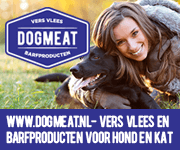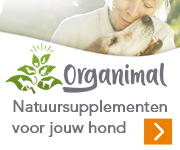A Theory on Inflammation
Gary Smith explains what observant healthcare practitioners have been
saying for a very long time, but perhaps they've not understood why
their observations led them to say it. His theory, incidentally, is
causing a huge stir within the inner scientific sanctum. Some believe
that his theory could lead to a
cure for many diseases including cancer. For me, it explains why the
vaccine process is inherently questionable.
Gary was learning about inflammation as part of his studies when he
struck upon a theory so extraordinary that it could have implications
for the treatment of almost every inflammatory disease—including
Alzheimer's, Parkinson's, rheumatoid arthritis and even HIV and AIDS.
Gary's theory questions the received wisdom that when a person gets
ill, the inflammation that occurs around the infected area helps it to
heal. He claims that, in reality, inflammation prevents the
body from recognising a foreign substance and therefore serves as a
hiding place for invaders. The inflammation occurs when at-risk cells
produce receptors called All (known as angiotensin II type I
receptors). He says that while At1 has a balancing receptor, At2,
which is supposed to switch off the inflammation, in most diseases
this does not happen.
"Cancer has been described as the wound that never heals," he says.
"All successful cancers are surrounded by inflammation. Commonly this
is thought to be the body's reaction to try to fight the cancer, but
this is not the case. "The inflammation is not the body trying to
fight the infection. It is actually the virus or bacteria deliberately
causing inflammation in order to hide from the immune system [author's
emphasis]."14 If Gary is right, then the inflammatory process so
> commonly stimulated by vaccines is not, as hitherto assumed, a
necessarily acceptable sign. Instead, it could be a sign that the
viral or bacterial component, or the adjuvant (which, containing
foreign protein, is seen as an invader by the immune system), in the
vaccine is winning by stealth. If Gary is correct in believing that
the inflammatory response is not protective but a sign that invasion
is taking place under cover of darkness, vaccines are certainly not
the friends we thought they were. They are undercover assassins
working on behalf of the enemy, and vets and medical doctors are
unwittingly acting as collaborators. Worse, we animal guardians and
parents are actually paying doctors and vets to unwittingly betray our
loved ones. Potentially, vaccines are the stealth bomb of the medical
world. They are used to catapult invaders inside the castle walls
where they can wreak havoc, with none of us any the wiser. So rather
than experiencing frank viral diseases such as the 'flu, measles,
mumps and rubella (and, in the case of dogs, parvovirus and
distemper), we are allowing the viruses to win anyway—but with
cancer, leukaemia and other inflammatory or autoimmune
(self-attacking) diseases taking their place.
The Final Insult
All 27 veterinary schools in North America have changed their
protocols for vaccinating dogs and cats along the following lines;15
however, vets in practice are reluctant to listen to these changed
protocols and official veterinary bodies in the UK and other countries
are ignoring the following facts. Dogs' and cats' immune systems
mature fully at six months. If £ modified live-virus vaccine is giver
after six months of age, it produces immunity, which is good for the
life of the pet. If another MLV vaccine is given a year later, the
antibodies from the first vaccine neutralise the antigens of the
second vaccine and there is little or no effect. The litre is no
"boosted", nor are more memory cells induced. Not only are annual
boosters unnecessary, but they subject the pet to potential risks such
as allergic reactions and immune-mediated haemolytic anaemia.
In plain language, veterinary schools in America, plus the American
Veterinary Medical Association, have looked at studies to show how long
vaccines last and they have concluded and announced that annual
vaccination is unnecessary.-16-19 Further, they have acknowledged
that vaccines are not without harm. Dr Ron Schultz, head of
pathobiology at Wisconsin University and a leading light in this
field, has been saying this politely to his veterinary colleagues
since the 1980s. I've been saying it for the past 12 years. But change
is so long in coming and, in the meantime, hundreds of thousands of
animals are dying every year— unnecessarily The good news is that
thousands of animal lovers (but not enough) have heard what we've been
saying. Canine Health Concern members around the world use real food
as Nature's supreme disease preventative, eschewing processed pet
food, and minimise the vaccine risk. Some of us, myself included, have
chosen not to vaccinate our pets at all. Our reward is healthy and
long-lived dogs. It has taken but one paragraph to tell you the good
and simple news. The gratitude I feel each day, when I embrace my
healthy dogs, stretches from the centre of the Earth to the Universe
and beyond
About the Author:
Catherine O'Driscoll runs Canine Health Concern which campaigns and
also delivers an educational program, the Foundation in Canine
Healthcare. She is author of Shock to the System (2005; see review
this issue), the best-selling book What Vets Don't Tell You About
Vaccines (1997, 1998), and Who Killed the Darling Buds of May? (1997;
reviewed in NEXUS 4/04). She lives in Scotland with her partner, Rob
Ellis, and three Golden Retrievers, named Edward, Daniel and Gwinnie,
and she lectures on canine health around the world.
For more information, contact Catherine O'Driscoll at Canine Health
Concern, PO Box 7533, Perth PH2 1AD, Scotland, UK, email HYPERLINK
"mailto:catherine%40carsegray.co.uk"[email protected] ,
website HYPERLINK
"http://www.canine-health-concern.org.uk."http://www.canine--health-
concern.-org.uk. Shock to the System is available in the UK from CHC,
and worldwide from Dogwise at HYPERLINK
"http://www.dogwise.com."http://www.dogwise.-com.
Endnotes
1. "Effects of Vaccination on the Endocrine and Immune Systems of
Dogs, Phase II", Purdue University, November 1,1999, at
HYPERLINK
"http://www.homestead.com/vonhapsburg/
haywardstudyonvaccines.html."http://www.homestea-d.com/vonhapsbur-g/
haywardstudyon-vaccines.-html.
2. See http://www.vet.purdue.-edu/epi/gdhstudy-.htm.
3. See HYPERLINK
"http://www.avma.org/vafstf/default.asp. ... g/vafstf/-
default.asp.
4. Veterinary Products Committee (VPC) Working Group on Feline and
Canine Vaccination, DEFRA, May 2001.
5. JVM Series A 50(6):286-291, August 2003.
6. Duval, D. and Giger,U. (1996). "Vaccine-Associated Immune-Mediated
Hemolytic Anemia in the Dog", Journal of Veterinary Internal Medicine
10:290-295.
7. New England Journal of Medicine, vol.313,1985. See also Clin Exp
Rheumatol 20(6):767-71, Nov-Dec 2002.
8. Am Coll Vet Intern Med 14:381,2000.
9. Dodds, Jean W.,DVM, "Immune System and Disease Resistance", at
HYPERLINK
"http://www.critterchat.net/immune.htm." ... c-hat.net/
immune.-htm.
10. Wolf Clan magazine, April/May 1995.
11. Goldstein, Martin, The Nature of Animal Healing, Borzoi/Alfred A.
Knopf, Inc., 1999.
12. Wolf Clan magazine, op. cit.
13. ibid.
14. Journal of Inflammation 1:3,2004, at HYPERLINK
"http://www.journal-inflammation.com"http://www.journal--inflammation.-
com content/1/1/-3.
15. Klingborg, D.J., Hustead, D.R. and Curry-Galvin, E. et al., "AVMA
Council on Biologic and Therapeutic Agents' report on cat and dog
vaccines", Journal of the American Veterinary Medical Association
221(10):1401--1407, November 15,2002, HYPERLINK
"http://www.avma.org/policies/vaccinatio ... avma.-org/
policies/-vaccination.-htm.
16. ibid.
17. Schultz, R.D., "Current and future canine and feline vaccination
programs", Vet Med 93:233-254,1998.
18. Schultz, R.D., Ford, R.B., Olsen, J. and Scott, P., "Titer testing
and vaccination: a new look at traditional practices", Vet Med
97:1-13, 2002 (insert).
19. Twark, L. and Dodds, W.J., "Clinical application of serum
parvovirus and distemper virus antibody liters for determining
revaccination strategies in healthy dogs", J Am Vet Med Assoc
217:1021-1024,-2000.






